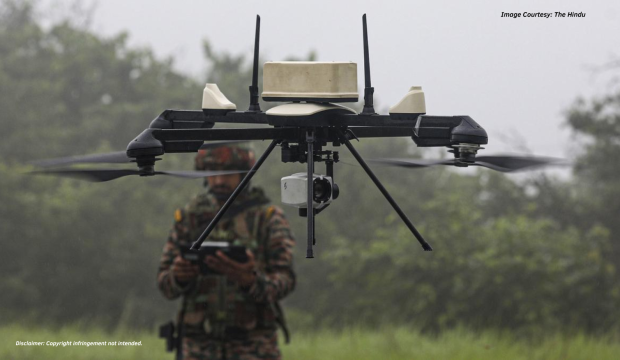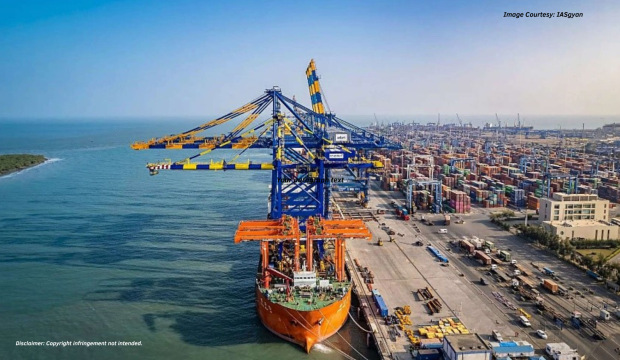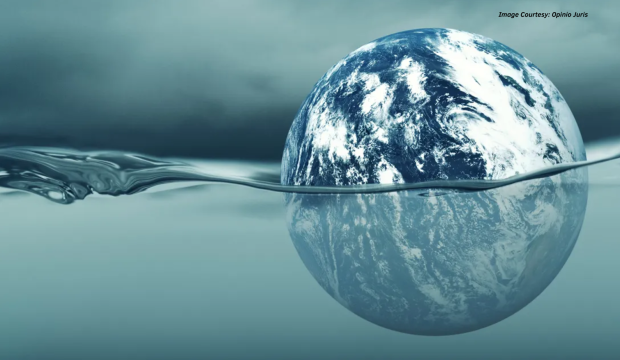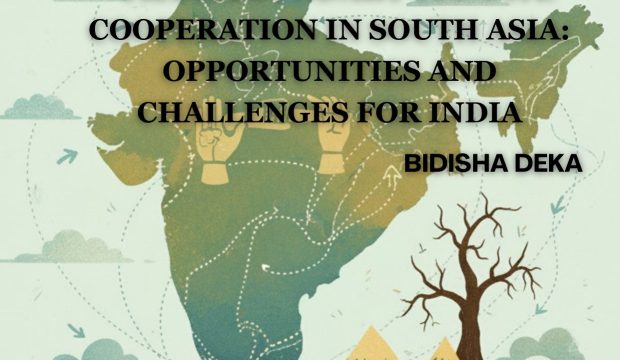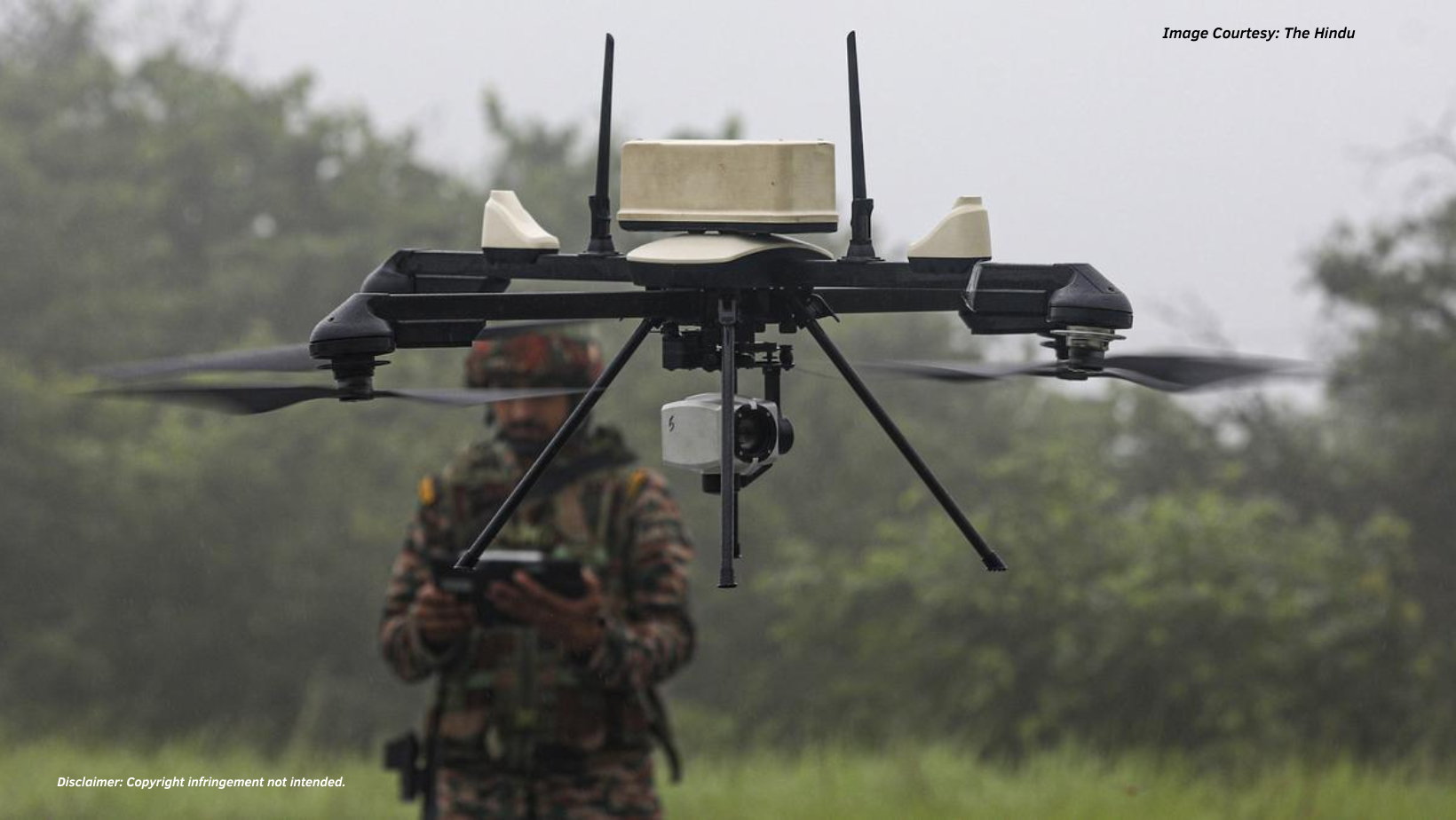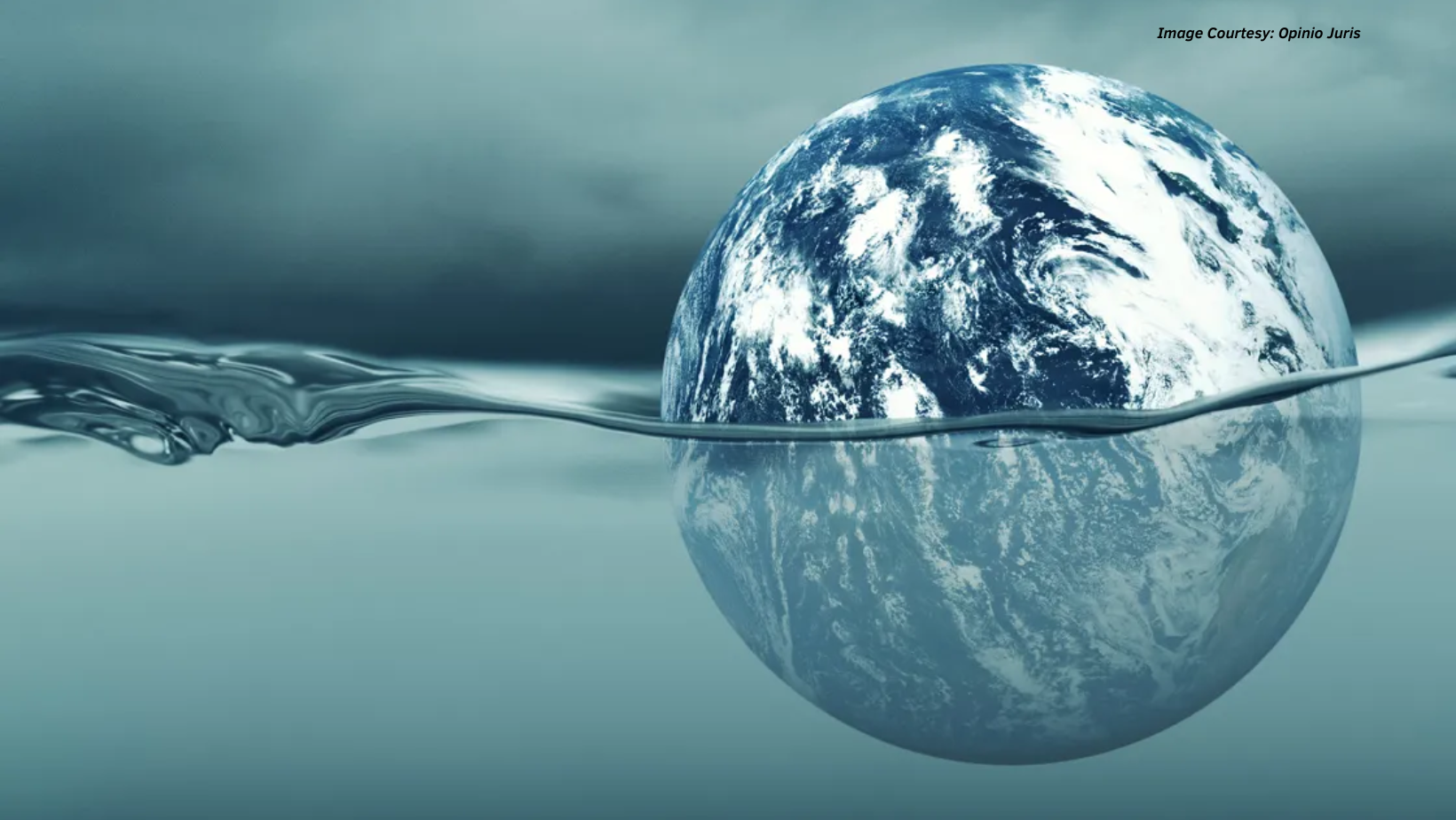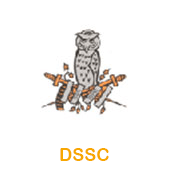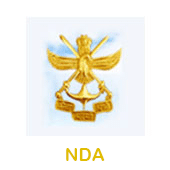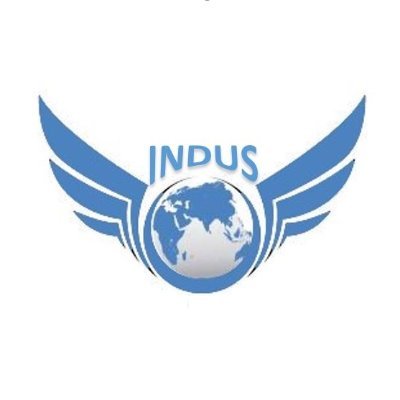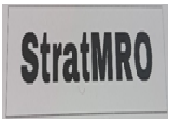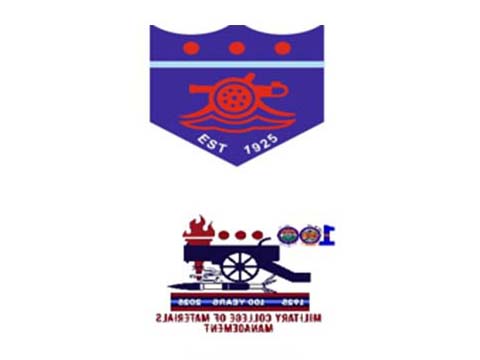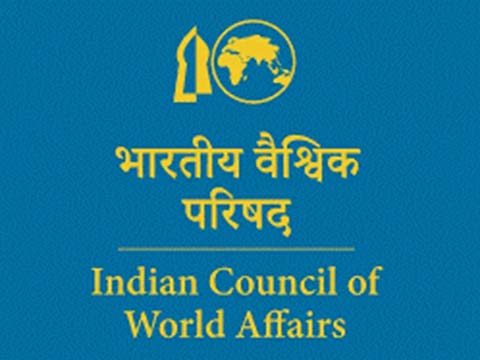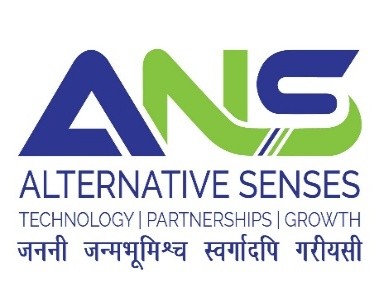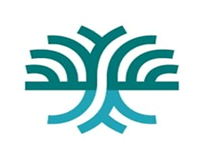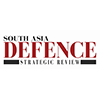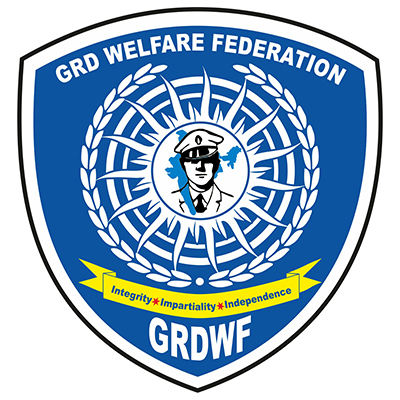Introduction
India’s strategic location in the Indian Ocean Region (IOR), with a 11,098 kilometres coastline and surrounded by major trading routes moving over 90% of goods by volume and over 74% by value makes maritime security a top national priority.i Increasingly complex threats like piracy, territorial disputes, illegal fishing, maritime terrorism, and cyberattacks now demand more than a traditional military approach.iiBefore dawn in March 2025, in the still darkness of the morning hours, an unknown fishing vessel not far from the Lakshadweep Islands was dealing with a larger threat.iii The vessel was intercepted by the coastal police operations who together with the Indian Coast Guard acted on intelligence received from local fisherfolk in the area. The Coast Guard intercepted and searched three Sri Lankan fishing vessels and located five AK-47, 1,000 live ammunition, and 300 kg of heroin, reported inland by the Coast Guard, and reported again by Alt News.iv
The successful interception on the water was made possible by real time intelligence sharing from the Information Fusion Centre Indian Ocean Region (IFC-IOR).v This is a textbook case of convergence at work. India’s maritime risk is compounded by regional chokepoints such as the Straits of Malacca and Hormuz, and the implications these locations have for global energy flows, and trade.
Maritime security must leverage a coordinated, multi-stakeholder approach integrating civilian agencies, private actors, international partners, maritime police, inclusive Coast Guard and naval forces to build enduring safety, stability, and resilience across India’s maritime domain.vi
A Sea of Challenges: The Current State of Maritime Security
The old threats of piracy are still also present. There were increase in piracy in both the Horn of Africa and the Gulf of Guinea where, unfortunately, piracy is again present. iAt the same time that these old threats are still present, new threats are developing the smuggling of weapons, illegal drugs, illegal harvesting of fish, and human trafficking.iiThese crimes are still happening in areas where it’s hard to identify sea borders and the waters are not being monitored. Illegal, Unreported, and Unregulated (IUU) fishing directly impacts sustainability of marine species and indirectly impacts the livelihoods of coastal communities and, in many cases, their food security.
The emergence of dangers such as cyberattacks has created a new threat. Ports and shipping systems have been hacked, as have undersea communication cables that transport data and form the backbone of all internet exposure and usage. An attack can potentially disrupt global supply chains, and we currently have few international regimes and rules to combat this cyber threat.iiiThe seas, once known mainly for carrying ships and goods, now face many serious and complex problems. Given that over ninety percent of global trade moves across the oceans, keeping these waters, safe is a global imperative, which reaches beyond any single state.ivThe Indian Ocean Region (IOR), the western quadrant of the enlarged Indo-Pacific space, is now a critical area of global trade, and energy routes, and strategic interests with unprecedented, as well as historic importance. It is an overall separating and connecting place that extends from a large land mass, Africa, to South-East Asia and the Pacific. It is central to global international relations today.
At the same time, increased competition between great powers has heightened overall pressure in the region. The ongoing expansion of naval bases, increasing patrols, and indirect methods of demonstrating power without engaging in overt conflict are commonplace among many nations. It is clear the Indo-Pacific has become the stage for these competitive rivalries. Apparently the most significant recent development for India, was the discovery of hydrocarbon resources, in the Andaman and Nicobar Islands, in early 2025. In this regard, India has advanced its energy resources, and with the assurance of ongoing relations between India and its hydrocarbon neighbours, it transforms the Andaman and Nicobar Islands signature into a more globally attractive geostrategic asset, while at the same time enhanced its utility as an economic asset regionally & globally. However, it also provides greater accountability to protect the waters from new and traditional threats.v
The most recent conflict between Iran and Israel are concerning. Attacks are being made on oil tankers and threats to close the Strait of Hormuz a small but critical maritime corridor of commerce where almost 1/5 of the world’s oil supply flows through are reverberating across oceans. This is indeed an alarming situation for countries, like India, which depend on data points moving in and through that corridor to calculate energy flows for their economy.vi
No single navy, or other agency, in the world can successfully respond to these maritime security challenges alone. Maritime security now requires “teamwork” – naval forces, coast guards, maritime police, customs, corporations, regional partners, and the international organisations, need to work closely together. Only in that manner can we keep the seas open, free, peaceful, and secure for everyone.
Making Sea Security Strong Together
For a long time, maritime security was handled by different agencies working on their own. The navy took care of the deep sea, coastal police managed the shorelines, and port authorities looked after cargo and port safety. While each group carried out its duties, they rarely worked together. This lack of coordination created serious security gaps, which could be used by those looking to cause harm. Modern threats at sea do not follow clear boundaries, so separate efforts are no longer enough. To address today’s complex challenges, all stakeholders must work together in a more connected and cooperative way.
This is where the idea of convergence becomes important. It goes beyond just sharing information, it helps create a common understanding of the situation, allows different agencies to coordinate their actions in real time, and leads to a strong, united response to any threat. In the end, convergence brings together the efforts of separate groups and turns them into one continuous and effective system of protection.
India’s move toward a more connected maritime security system began after the 26/11 Mumbai attacks, which revealed serious gaps in coastal surveillance and response. In the immediate aftermath, India took several steps such as setting up radar chains, strengthening port security, and improving the flow of information. However, most of these efforts were reactive in nature. A more significant shift happened with the establishment of the Information Fusion Centre–Indian Ocean Region (IFC-IOR) in Gurugram. This centre now serves as a key regional hub for maritime intelligence and cooperation, with over twenty partner nations actively sharing information and playing important roles in it.iOne clear example that shows the progress made in maritime cooperation occurred in February 2025, when a foreign vessel was reported behaving suspiciously near the Maldives’ Exclusive Economic Zone (EEZ).iiThe alert was raised by the IFC-IOR. Thanks to swift coordination with Maldivian authorities and timely technical support from India, the vessel was successfully intercepted by Maldivian forces. This quick response averted what could have become a serious threat to the Maldives’ offshore energy infrastructure. More than just a successful operation, it was a clear demonstration that regional cooperation isn’t just a strategic concept but it’s like a practical necessity. When countries work together, they can better protect lives, safeguard maritime borders, and build lasting trust in the region.
In today’s rapidly evolving maritime landscape, the responsibility of keeping our seas safe can no longer rest only on naval forces. It demands a wider circle of collaboration involving almost all sector that includes government agencies, private industry, local communities, and international partners. Maritime security has truly become a collective responsibility. While government agencies continue to monitor waters, conduct patrols, and enforce regulations, their effectiveness multiplies when the private sector steps in as a proactive partner. Today, shipping companies, insurers, underwater cable operators, and even tech start-ups are playing a growing role. With the help of tools like drones, satellite surveillance, and AI-driven monitoring systems, they are helping create a more watchful, responsive, and secure maritime domain.
Local communities also play an important role, especially fishermen and boat operators who know the sea well. They can help by reporting anything unusual they see. A good example is a 2025 pilot project in Andhra Pradesh, where fishermen were trained to use a mobile app to report suspicious activity. During one patrol, they raised four alerts through which one led to the discovery of a foreign trawler pretending to be a local boat.iii
International organizations such as International Criminal Police Organization better known as INTERPOL, United Nations Office on Drugs and Crime (UNODC), Bay of Bengal Initiative for Multi-Sectoral Technical and ivEconomic Cooperation (BIMSTEC), Indian Ocean Rim Association (IORA), and the Quadrilateral Security Dialogue (QUAD) contribute through their respective expertise in intelligence sharing, capacity building, and model exercises.v
As part of India’s forward-looking Viksit Bharat 2047 vision, the Ministry of Ports, Shipping and Waterways has outlined a plan to transform Indian ports into smart, green, and secure hubs. This forward-looking vision embraces cutting-edge technologies like artificial intelligence (AI) and blockchain not just for efficiency, but also for sustainability. It represents a balanced approach where the growth of maritime industries goes hand-in-hand with efforts to strengthen maritime security and promote sustainable development. It’s not simply about progress but it’s more about responsible progress.
The Role of Multilateralism and Legal Frameworks
India’s maritime policy today is increasingly anchored in multilateral cooperation. A shining example is India’s leadership in hosting MILAN 2024, a major multilateral naval exercise that brought together over 40 partner nations. It’s a strong signal of India’s intent to foster regional trust and collaboration through shared security efforts. Beyond MILAN, India’s active involvement in the Rim of the Pacific Exercise (RIMPAC) and its support for the Indo-Pacific Maritime Domain Awareness Initiative (IPMDA) under the QUAD framework further reflect its commitment to building regional capacity, transparency, and operational synergy.
But multilateral exercises, no matter how impactful, are only one part of the equation. For lasting outcomes, it is equally important for countries to work towards harmonising their legal frameworks so that cooperation at sea isn’t hindered by confusion in courtrooms. A stable, rules-based maritime order depends not only on ships and sailors, but also on shared laws, mutual respect, and legal alignment among maritime neighbours.
This includes forming Mutual Legal Assistance Treaties (MLATs), creating extradition agreements, and setting up standard operating procedures based on shared understanding. These steps can help close legal gaps that are often exploited by transnational criminals operating across borders. The 2024 India-Seychelles MoU on extradition and joint port surveillance is a visit to initial efforts create legal routes for countering maritime crime.i
Furthermore, India’s Maritime Security Strategy 2024 also takes into account various non-traditional threats i.e., climate change induced migration, illegal sand mining and cyber threats on port infrastructure, Expanding the idea of maritime security to include more than just protecting a country’s physical sea borders.
The Road Ahead: Institutionalizing Trust and Integration
In order for India to go from episodic collaboration to systemic convergence, it is vital for it to institutionalize engagement with maritime stakeholders. This would entail:
- Developing formal data-sharing protocols with the Navy, Coast Guard, Police, and privately owned ports.
- Designating integrated training academies for all personnel in cross-sector maritime security.
- Formulating community intelligence networks at the panchayat and district level in coastal locations.
- Funding blue tech start-ups that focus on maritime, surveillance, sustainability, and logistics.
- Completing a National Maritime Security Grid that would allow for the synchronization of all national and state agencies on one common digital platform.
India has demonstrated its G20 motto of “One Earth, One Family, One Future” in the maritime domain by engaging with small island states through naval exercises and growing its SAGAR initiative into Maha SAGAR, which is a strong example of leading inclusively and in support of collective maritime security.
Conclusion: Towards A Culture of Convergence
What begins as coordination must evolve into culture. Maritime security cannot be reactionary. It must be anticipatory, inclusive, and deeply integrated. Just as a sea is made not by one stream but many rivers flowing into it, maritime safety is secured not by one force, but by a confluence of actors.
The Lakshadweep incident of March 2025 was not just about intercepting a rogue vessel. It was a moment that reaffirmed the value of shared vigilance. In an age when oceans can either connect or consume us, convergence is not just a strategy it is survival. Let India lead by example, navigating not alone, but together.
DISCLAIMER
The paper is author’s individual scholastic articulation and does not necessarily reflect the views of CENJOWS. The author certifies that the article is original in content, unpublished and it has not been submitted for publication/ web upload elsewhere and that the facts and figures quoted are duly referenced, as needed and are believed to be correct.
References
- iMinistry of Shipping, Length of India’s Coastline, Government of India, https://shipmin.gov.in/sites/default/files/Length%20of%20Indias%20Coastline%20Circular_0.pdf.
- iiIndian Navy, Ensuring Secure Seas: Indian Maritime Security Strategy, Integrated Headquarters, Ministry of Defence (Navy), 2015.
- iii Alt News, “Did Indian Coast Guard Intercept Boats with Narcotics and Weapons Headed to Kerala?” Alt News, June 2025, https://www.altnews.in/did-indian-coast-guard-intercept-boats-with-narcotics-and-weapons-headed-to-kerala/.
- iv
- vInformation Fusion Centre – Indian Ocean Region, Annual Review 2024–25, Indian Navy, https://www.indiannavy.nic.in/ifc-ior.
- viEnergy Information Administration, World Oil Transit Chokepoints, https://www.eia.gov/international/analysis/special-topics/World_Oil_Transit_Chokepoints.
- viiInternational Maritime Bureau, Piracy and Armed Robbery Against Ships: Annual Report 2024, ICC Commercial Crime Services, https://www.icc-ccs.org.
- viiiUnited Nations Office on Drugs and Crime (2023), Transnational Organized Crime in the Fishing Industry, https://www.unodc.org/unodc/en/human-trafficking/2023/fishing.html.
- ixInternational Maritime Organization (2021), Maritime Cyber Risk Management in Safety Management Systems, MSC-FAL.1/Circ.3, July 2021.
- xUNCTAD, Review of Maritime Transport 2024, United Nations Conference on Trade and Development, https://unctad.org/publication/review-maritime-transport-2024.
- xiMinistry of Petroleum and Natural Gas, Government of India (2025), “Massive Oil Discovery in Andaman Sea,” Angel One News, https://www.angelone.in/news/massive-oil-discovery-in-andaman-sea-here-is-why-it-could-transform-india-s-energy-future.
- xiiBBC News (2025), “Iran-Israel Tensions Rise as Tanker Attacks Threaten Global Oil Supplies,” https://www.bbc.com/news.
- xiiiInformation Fusion Centre – Indian Ocean Region (2025). Official Website of IFC-IOR, Indian Navy. https://ifcior.indiannavy.gov.in/
- xivBusiness Today (2024). “China’s Research Vessel Back to Maldives’ EEZ after Departing from Male: Report.” Business Today, https://www.businesstoday.in/world/story/chinas-research-vessel-back-to-maldives-eez-after-departing-from-male-report-419385-2024-02-28
- xvThe New Indian Express (2025). “Andhra’s Narakoduru Set for Digital Makeover under National Smart Village Pilot Project.” The New Indian Express. https://www.newindianexpress.com/states/andhra-pradesh/2025/Jun/25/andhras-narakoduru-set-for-digital-makeover-under-national-smart-village-pilot-project
- xviStanding Committee on External Affairs – Lok Sabha (2024). Report on Maritime Safety and Security in the Indian Ocean Region. Lok Sabha Secretariat. https://sansad.in/getFile/lsscommittee/External%20Affairs/18_External_Affairs_3.pdf

Ms Monika Kumari
is a Research Intern at CENJOWS



